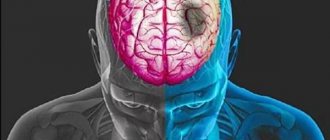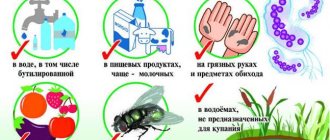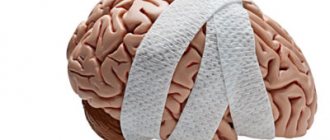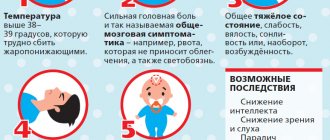Causes of headache and fever
Symptoms such as headache and fever are common symptoms of a wide range of disorders. At home, it is difficult to understand what caused the deterioration in health, so it is important to undergo a full diagnosis. These may be infectious diseases, in which it is recommended to limit contract with others, as well as chronic non-contagious internal diseases in the initial stages.
Viral diseases
Fever and headache are signs of colds, which often appear during the cold season. The viral infection multiplies on the mucous membrane of the upper respiratory tract. Flu, sore throat, ARVI are often diagnosed in adults and children. The severity of these diseases depends on the patient's age, treatment regimen and other factors. It is important to understand that before the first signs appear, the patient already becomes a carrier of infection and poses a danger to others. On average, this period lasts from 3 to 7–10 days.
Tests for infectious viral diseases are carried out if the patient develops characteristic symptoms:
- fever, temperature, headache;
- cough, difficulty breathing, possible sputum production;
- nasal congestion;
- sore throat, inflammation of the mucous membrane of the nasopharynx;
- general weakness, deterioration of health.
One of the stages of diagnosis is fluorography of the lungs. If in the initial stages a viral infection affects only the upper respiratory tract, then it can further spread to the lower sections. This goes away if the patient is not given bed rest in time and a course of treatment is not prescribed. The body's immune defense is not enough to fight infection during periods of seasonal immunodeficiency, in the presence of any chronic diseases in the anamnesis. To quickly regain strength and cope with the virus, rest and plenty of fluids are prescribed, a course of vitamins and antiviral drugs is prescribed, and antibiotics are included if necessary.
Inflammation of the paranasal sinuses
Sinusitis is inflammation of the sinuses. Normally, they are sterile cavities formed by the bones of the skull, inside which there is air. However, when a bacterial infection occurs, purulent inflammation develops, which is accompanied by a severe headache and fever. The disease can be triggered by viral diseases of the respiratory tract, polyps in the nasal passages, swimming in contaminated water, and is also a complication of otitis media and ARVI.
Headache at a temperature of 38 degrees or more may be a sign of the following diseases:
- sinusitis - the most common form of sinusitis, purulent inflammation of the maxillary sinus;
- frontal sinusitis - affects the frontal sinus;
- ethmoiditis - a purulent process in the ethmoid labyrinth;
- sphenoiditis - inflammation of the sphenoid sinus.
Treatment of sinusitis and other sinusitis is prescribed individually. In some cases, taking antibiotics, vasoconstrictor drugs and regular nasal rinsing is sufficient. However, sometimes conservative treatment is ineffective, and to remove purulent contents it is necessary to puncture the maxillary sinuses. This is a painful procedure that doctors try to avoid and prescribe only when absolutely necessary.
Meningitis
One of the dangerous diseases that requires urgent hospitalization and treatment in a hospital is meningitis, an inflammation of the membranes of the brain. The process can develop independently or manifest itself as a complication of infectious pathologies. The first symptoms are chronic headache, which is accompanied by fever. The thermometer readings can remain within 37.5 degrees, but in some patients they rise to a critical level.
There are several types of meningitis, depending on its cause, nature of the course and other features:
- bacterial – develops when a meningococcal infection enters the mucous membrane of the respiratory tract and spreads through the body through the blood;
- purulent - secondary inflammation, which manifests itself as a result of the addition of staphylococcus, E. coli and other bacterial pathogens;
- serous - meningitis, which occurs without purulent complications, is often caused by enteroviruses, as well as polio viruses and other types;
- tuberculous - a specific type provoked by Mycobacterium tuberculosis;
- protozoan - the causative agent is the intracellular parasite Toxoplasma, which enters the body with raw meat and offal.
High fever and headache are a reason to urgently consult a doctor. It is important to understand that some types of meningitis develop due to a viral infection. The disease is transmitted to others, so the patient requires hospitalization in a virus hospital. The process is dangerous because as a result of inflammation, brain cells are destroyed and cannot perform their functions. In the chronic course of meningitis, disruption of the functioning of internal organs, developmental delay in children, as well as complete or partial paralysis are possible. Treatment is aimed at relieving inflammation and preventing purulent complications, as well as restoring neural connections.
Toothache
One of the reasons why you get a headache when you have a fever is dental disease. Tooth decay, nerve inflammation, abscesses and other pathologies can cause severe pain. It spreads to the entire surface of the face, temples and the back of the head. The patient is worried about chronic migraines, fever up to 37 degrees or more. The pain intensifies during chewing and often worsens at night. It is important to see a dentist in a timely manner, and it is not recommended to take painkillers before visiting a doctor.
Poisoning
Headaches and fever in adults and children accompany various poisonings. The main reason is the ingestion of toxins that accumulate in the bloodstream and internal organs. They cause disruption of the digestive tract, liver and excretory system, and can also affect nerve tissue. If toxins reach the brain, the condition is dangerous due to neuronal necrosis and disruption of vital functions. Poisoning can be caused by poor-quality food, poisonous gases, salts of heavy metals, pesticides, certain medications, and alcoholic beverages.
Poisoning can be identified by characteristic symptoms:
- general weakness, sharp deterioration in health;
- headaches, dizziness, possible fainting;
- sharp abdominal pain, disruption of the digestive tract;
- with damage to the nervous system - hallucinations.
Food poisoning can be successfully treated at home. The patient is prescribed a starvation diet and plenty of fluids, sorbents and drugs to restore the microflora of the digestive tract. If your health sharply worsens, it is possible to relieve intoxication only in a hospital setting. In this case, drip infusions of electrolyte solutions are prescribed, as well as drugs to remove toxins from the body.
Thermoneurosis
If the temperature rises with a headache, but tests do not show any deviations from the norm, this may be a symptom of thermoneurosis. The patient’s health is deteriorating, and the patient suffers from chronic migraines. The condition is the body's reaction to the following factors:
- irregular daily routine, lack of rest, night work;
- stress, anxiety;
- disorders of the autonomic nervous system.
The main sign of thermoneurosis is a persistent increase in temperature up to 37 degrees and chronic headaches. The examinations do not detect any pathologies, inflammatory processes, viral infections or other disorders that could provoke a deterioration in health. Doctors recommend proper rest and restoration of a normal daily routine, as well as a course of vitamins. In most cases, such changes have a positive effect on health and help against fever and headaches.
Neoplasms
One of the reasons why it is important to undergo a comprehensive examination for chronic headaches and fever to 37–38 degrees is neoplasms. Brain tumors can be benign or malignant and vary in shape, size and growth rate. They are determined using MRI, and treatment tactics are prescribed individually. It is important that at the initial stages, neoplasms can remain asymptomatic, but then they cause necrosis of nerve tissue and disruption of brain function. Their timely detection is the key to effective treatment, since most functions of the nervous system can be preserved in the initial stages.
Other reasons
Fever and headaches in children and adults are symptoms of a number of pathologies and conditions that can go away on their own or require emergency treatment. They may indicate the following violations:
- intestinal infections - at the initial stages they resemble a cold or flu, but then cause acute digestive upset;
- high blood pressure - with chronic hypertension, the temperature can rise to 37 degrees or more;
- nephritis, pyelonephritis – inflammation of the kidneys;
- any chronic inflammatory processes during the period of exacerbation.
Even a healthy person can experience headaches from time to time. However, if it is accompanied by fever, weakness and other symptoms, this indicates the initial stage of the disease. To select an effective treatment, it is necessary to accurately determine the nature of the pathological process and its cause.
What and how to properly reduce a child’s fever
The following antipyretics are contraindicated for children under 12-15 years of age: the pain reliever analgin, non-steroidal anti-inflammatory drugs (NSAIDs) aspirin and nimesulide.
Babies are only allowed medications (tablets, capsules, syrups, suppositories) that contain paracetamol (from 3 months) or ibuprofen (from 6 months). If we are talking about taking syrup, you should correctly calculate the dosage.
The concentration of the active substance in the liquid form of the medicine (syrup, drops) is calculated by the attending physician, analyzing each clinical case individually. The amount of the drug most often depends on the age and weight of the small patient and is measured with a special measuring spoon or dispensing syringe, and not “by eye”.
With chickenpox (chickenpox), the temperature has a wave-like course. In this case, only paracetamol is allowed to reduce it.
Examination methods
High-quality and timely diagnosis is the main condition for proper treatment. During the initial examination, temperature is measured and medical history is collected, including information about any chronic diseases. However, to understand the full picture, a number of additional examinations are necessary to make a final diagnosis. The doctor may prescribe the following methods:
- MRI of the head is a comprehensive, informative way to determine tumors, areas of ischemia and other pathologies of the brain;
- CT is a modern method of examination, which also allows you to obtain a complete three-dimensional picture of the brain;
- Dopplerography of the vessels of the head and neck is an important diagnostic stage, thanks to which cerebral circulatory disorders are detected;
- blood tests - tests will indicate inflammatory processes, the presence of infection, poisoning and other pathologies.
The Clinical Brain Institute has modern equipment for diagnosing diseases that are accompanied by headaches. This allows you to accurately and quickly determine the cause of deterioration in health and differentiate pathologies that are similar in clinical picture. It is impossible to make an accurate diagnosis at home, as well as as a result of a simple examination of the patient.
With a runny nose
With colds, pain and pain appear in the eyes due to swelling of the sinuses, and the eyes can hurt with a cold without fever.
In such cases, you need to promptly and correctly clear your nose of mucus so that germs do not enter the sinuses, otherwise this may cause sinusitis.
It is best to use disposable paper tissues. Vasoconstrictor drops that relieve swelling, such as Naphthyzin and Galazolin, will help a lot. You can also take antihistamines - Diazolin, Suprastin or others. The doctor will prescribe suitable medications for you.
Treatment of headache and fever
Treatment tactics for diseases that cause headaches and high fever will differ. It is selected as a result of a complete examination, taking into account many factors. The doctor takes into account the cause of poor health, the stage and form of the disease, as well as the patient’s age and the presence of chronic pathologies in his medical history. There are several methods and stages of treating headaches and fever.
- Drug treatment is prescribed for any pathology. The course may include anti-inflammatory and painkillers, antibiotics, and vasoconstrictors. Symptomatic treatment of colds is also carried out, which includes rinsing the nose. For diseases that affect the brain, therapy is carried out in a hospital and includes drugs to improve cerebral circulation.
- Surgical treatment is prescribed only if conservative methods are insufficiently effective. Surgery may be required to remove tumors that are disrupting brain function and tend to grow rapidly. Surgical techniques are also effective for sinusitis, dental problems, and polyps in the nasal passages.
- Additional techniques are selected separately for various diseases. Thus, for thermoneurosis, a course of physiotherapy and massage, the use of muscle relaxants and mild sedatives are recommended. It is possible to lower the temperature at home, but only if it rises to critical levels (38 degrees or more).
At the Clinical Brain Institute you can get effective recommendations that will help you get rid of headaches, relieve fever and restore a normal lifestyle. Most patients are treated at home, taking prescribed medications. At the end of the course, you must undergo a re-examination to ensure complete recovery or continue treatment. It is impossible to choose the optimal regimen on your own - symptomatic remedies will mask the manifestation of diseases, but will not eliminate their cause.
Antipyretic drugs - how to use for children
It should be noted that antipyretic analgesics and anti-inflammatory drugs are not taken prophylactically. Children can only use them if the thermometer has high numbers.
For infants (under 1 year of age), it is advisable to use rectal suppositories. In this form, the drug acts slightly later than in oral form (by mouth). For children from one year to 6 years inclusive, pharmaceutical companies produce antipyretics in the form of syrups and solutions.
From the age of seven, a child can be given tablets or capsules.
It is necessary to take into account one more condition for combating fever in children. The numbers on the thermometer do not have to reach normal levels. A good result is a decrease in the child’s temperature by at least 1°C. Also, positive dynamics will be an improvement in the patient’s well-being: the appearance of vigor and appetite.
Prevention methods
At home, you can prevent diseases that cause high fever and acute headache. If you follow doctors' recommendations, you can strengthen the immune system, increase the body's resistance to viral diseases, and also identify chronic diseases of internal organs in the early stages. To do this, it is enough to fulfill a few simple conditions:
- avoid hypothermia of the head, especially during sudden temperature changes;
- ensure proper rest and normal daily routine;
- get enough vitamins from food or in medications;
- Lead an active lifestyle and pay attention to physical activity.
The Clinical Institute of the Brain has all the conditions for a full diagnosis and successful treatment of diseases that are accompanied by headaches and fever. High-quality modern equipment, highly qualified specialists and many years of experience, the opportunity to undergo treatment in a hospital setting are the main advantages of the center. Doctors recommend not only contacting the patient at the first symptoms, but also undergoing regular examinations to identify hidden pathologies in the initial stages.
Clinical Brain Institute Rating: 5/5 — 1 votes
Share article on social networks
For the flu
When treating this disease, the main task is to remove toxins (waste products of microbes) from the body. In this case, drinking plenty of warm water helps well, especially decoctions of various herbs and plants: rose hips, linden, St. John's wort, chamomile, mint, sea buckthorn. These plants have diaphoretic, diuretic, antibacterial and anti-inflammatory effects. You can brew them in a thermos and add cumin, ginger, bay leaf, which help strengthen the immune system. Berry fruit drinks and juices from cranberries, lingonberries, and raspberries also help. At high temperatures, the body loses a lot of fluid, so it is important to replenish its balance in a timely manner.
It is also recommended to limit visual stress: reading, watching TV, etc. It is better to darken the windows in the room to protect your eyes from daylight.
What to do if there are complications from the disease?
In case of sinusitis, eye flu, acute conjunctivitis, you should contact a specialist who will decide what treatment to prescribe in this case. Local or systemic antibiotics are usually used. For conjunctivitis, it is recommended to wash the eyes with a decoction of chamomile or calendula.
It is very important to prevent complications from occurring and treat viral and colds in a timely manner, following the recommended regimen. Complications from the disease can seriously affect eye health and quality of vision.










